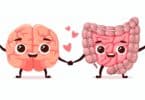
“Almost everything experienced by a woman during a pregnancy has to interact with the placenta in order to transmit to the fetus,” lead researcher Dr. Tracy Bale from the University of Pennsylvania’s School of Veterinary Medicine told Daily Mail UK. “Now we have a marker that appears to signal the fetus that the mother has experienced stress.”
During their study, researchers examined two groups of mice. One group was exposed to various mild stressors like the smell of foxes or unfamiliar sounds during their first week of pregnancy. The other group was not exposed to these stressors. Researchers then waited until these mice delivered to check the placentas for differences.
Mice that were exposed to stressors had lower levels of an enzyme called OGT, researchers said. Placentas belonging to male offspring were also found to have lower levels of the enzyme when compared to female offspring placentas. Researchers believe this enzyme places an integral role in protecting the brain during pregnancy. They drew this conclusion after conducting further research in which it was shown that more than 370 genes in the brains were altered by cutting the levels of OGT in pregnant mice.
Researchers strongly believe that this data will transfer over to humans. This is due, in part, to the fact that former analysis of discarded human placentas found reduced OGT levels in the placentas belonging to male babies.
While the data is not definitive, it could pave the way for earlier detection of certain neurological conditions in human children. Doctors may be able to spot high risk children early on and follow them more closely so that early diagnosis and intervention can be made.
“We want to get to the point where we can predict the occurrence of neurodevelopmental disease,” Bale said. “If we have a marker for the exposure, we can meld that with what we know about the genetic profiles that predispose individuals to these conditions and keep a close eye on children who have increased risks.”
Related Articles:
- Toddler with Undetectable HIV Virus has Doctors Talking about a Cure
- Pioneering Stem Cell like Treatment May Help Preemies Breathe Easy
- Autistic Children Show Improved Social Interaction and Behaviors When Animals are Present






